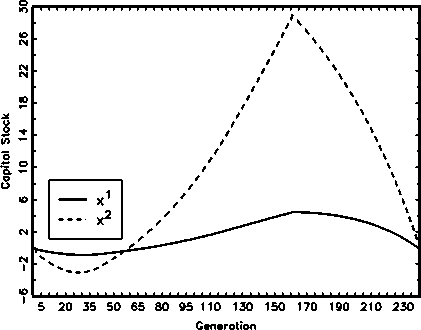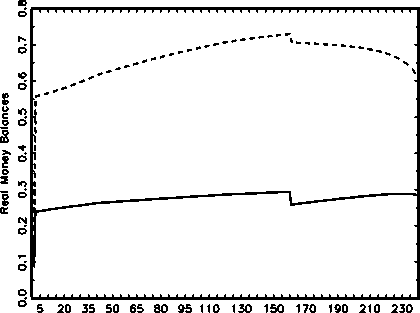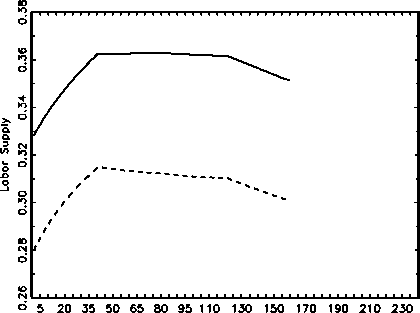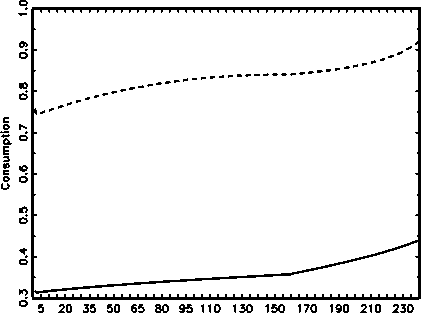Figure 1
Non-stochastic Steady State


Generotion

Generotion

Generotion
wealth in our model is also close to the one observed empirically. In our model, the
Gini coefficient of wealth amounts to 0.64, whereas Greenwood (1983), Wolff (1987),
Kessler and Wolff (1992), and Dlaz-Gimenez, Quadrini, and Rlos-Rull (1997) estimate
Gini coefficients of the wealth distribution for the US economy in the range of 0.72
(single, without dependents, female household head) to 0.81 (nonworking household
head).13 Our model only fails to model the wealth concentration among the very rich
agents. In order to replicate the wealth distribution of the top quintile, one had to
introduce entrepreneurship as in Quadrini (2000).
calculate the Gini coefficient using only six observations to approximate the Lorenz curve.
13Huggett (1996) shows that we are able to replicate the empircally observable heterogeneity of
wealth in a computable general equilibrium model if we introduce both life-cycle savings and individual
earnings heterogeneity.
16
More intriguing information
1. On the estimation of hospital cost: the approach2. Personal Experience: A Most Vicious and Limited Circle!? On the Role of Entrepreneurial Experience for Firm Survival
3. The name is absent
4. Magnetic Resonance Imaging in patients with ICDs and Pacemakers
5. Regulation of the Electricity Industry in Bolivia: Its Impact on Access to the Poor, Prices and Quality
6. MANAGEMENT PRACTICES ON VIRGINIA DAIRY FARMS
7. The name is absent
8. Examining Variations of Prominent Features in Genre Classification
9. Meat Slaughter and Processing Plants’ Traceability Levels Evidence From Iowa
10. The Shepherd Sinfonia